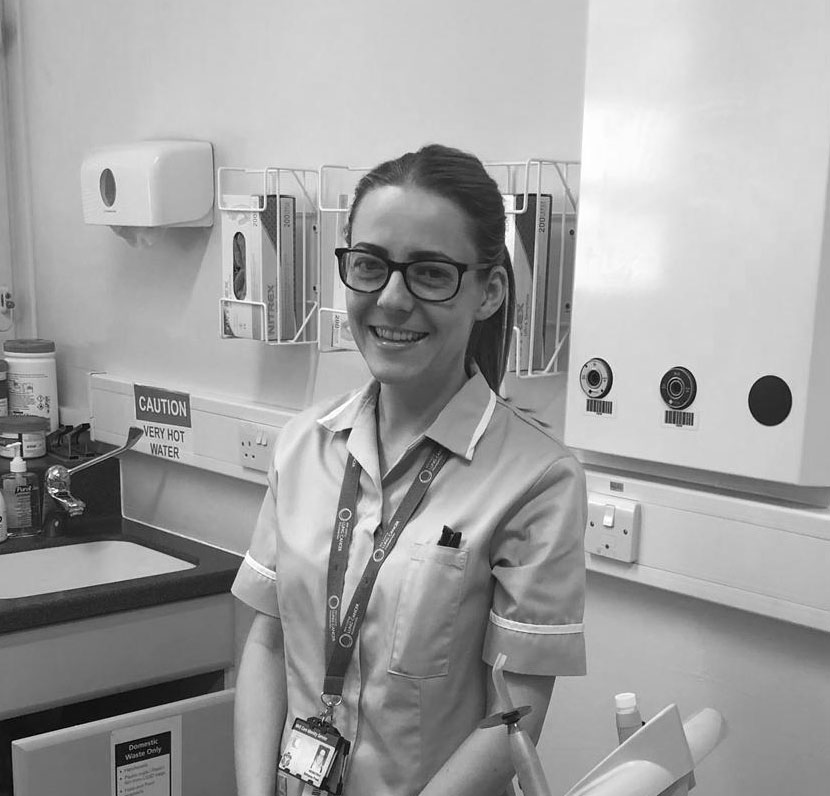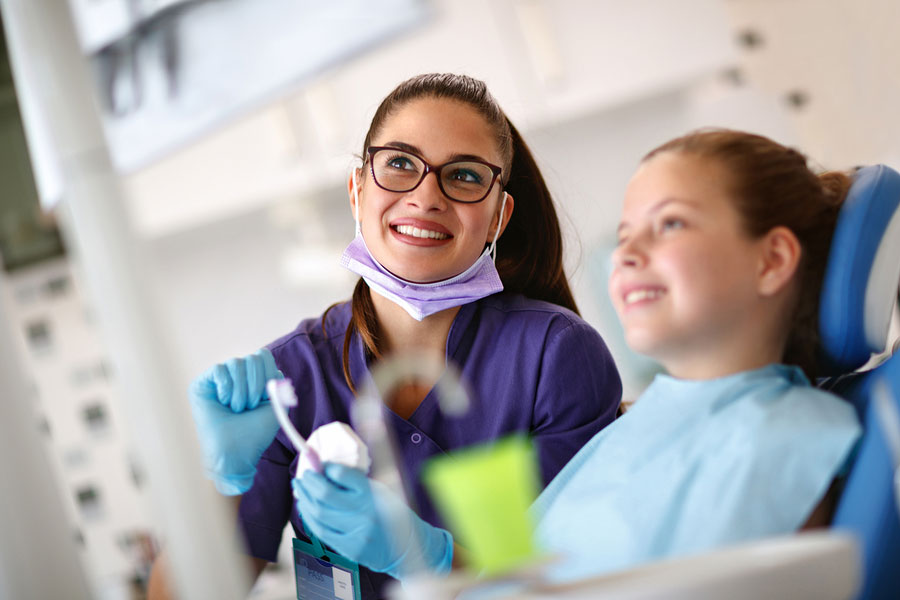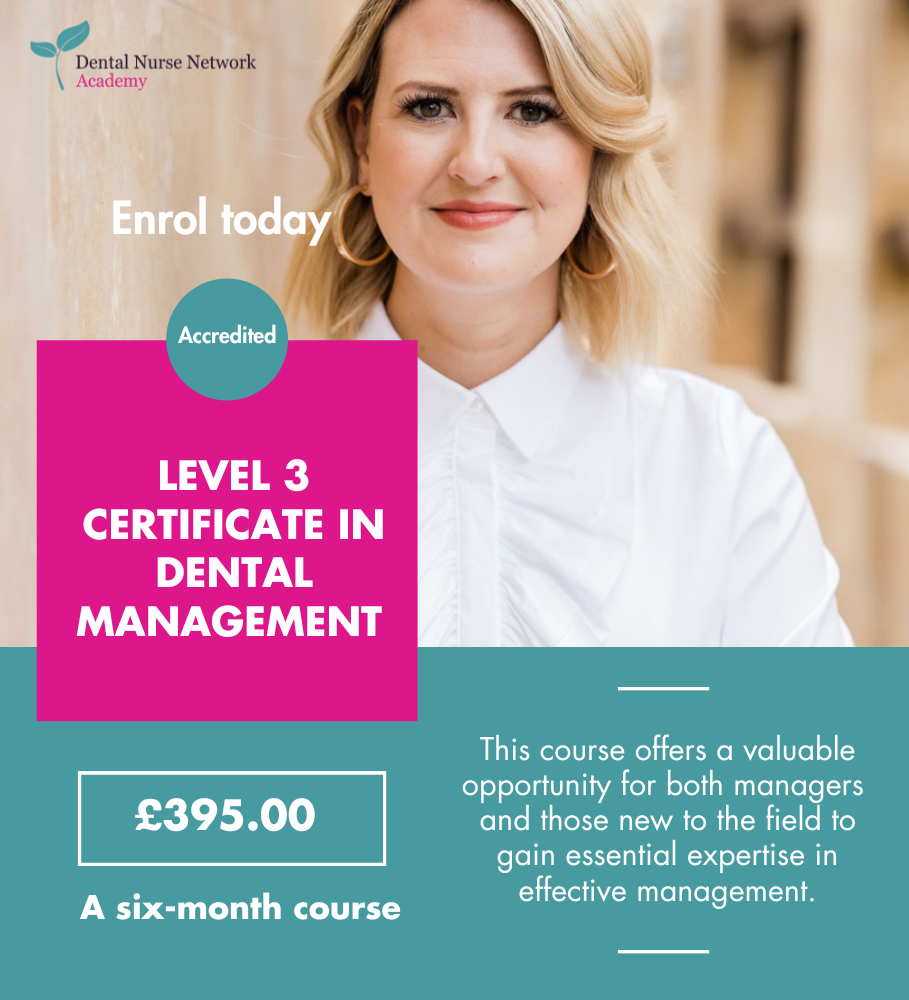 Have you ever thought of setting up a dental nurse-led clinic for patients attending minor appointments such as those for records or oral health?
Have you ever thought of setting up a dental nurse-led clinic for patients attending minor appointments such as those for records or oral health?
Did you know that setting up a dental nurse led clinic could dramatically decrease the list backlog at your practice or department? With so many post-registration qualifications and certificates available to registered dental nurses, it’s now easier than ever to gain the correct skills and training to successfully run such clinics.
Back in 2016, I had recently completed an oral health post-registration qualification along with a certificate in impression-taking. I was eager to utilise my new skills, and I also wanted to develop my knowledge further with practical experience. It’s great having these extra qualifications, but if the skills they teach are not being practised regularly, it becomes easy to forget how to do things, and it can also lead to a loss of confidence. With this in mind, I spoke to a consultant at the hospital where I work. He told me that there had been some preliminary discussions about setting up a new clinic in which nurses would take impressions and photographs for patients on the list for orthodontic appointments. However, they hadn’t yet figured out how to go about this and hadn’t even got round to asking if anyone would be interested in doing it.
Once I found this out, I was eager to proceed, so we looked into what training I would need. I was already competent at taking impressions, having recently gained a relevant certificate. I was also due to go on the orthodontic nursing course, in which I would complete a module on extra- and intra-oral photography. We knew that I would need to complete training in these areas sooner rather than later if I was going to start seeing patients myself in a records clinic. Other nurses were asked if they wanted to participate in this new initiative, and I was delighted when one of my colleagues also decided that it would be a great opportunity and agreed to give it a go. After we had completed the necessary training, a proposal detailing what we were planning to do had to be passed by management. It was important to check things like the hospital’s indemnity insurance to confirm that it permitted nurses to perform extra duties.
Next, we checked the format of the clinics, how they would run and what we would need. It is a legal requirement for any nurse performing extra duties, such as impression-taking or fluoride application, to first obtain a prescription for treatment from a registered dentist, no matter what qualifications the nurse possesses. This can be something as simple as a GDP writing a prescription for treatment in the patient’s notes and signing it. However, after doing some research, we thought it would be better to have a specially designed form that the dentist can use to prescribe the precise treatment is required before signing it off. We also added extra information to the form, such as who the patient should be booked back in with after the treatment was finished. The design of this form not only adhered to the legal requirements for a dental nurse carrying out extra duties, but also helped ensure that patients’ treatment would continue smoothly when transferring them between operators.

Once the clinic began, my colleague and I started to get into a good routine, and after a couple of months we were able to increase our lists from three patients per afternoon to five. We gave ourselves thirty minutes for each patient to complete consent, take extra- and intra-oral photographs, take impressions and bite registrations, and briefly go through oral health education for any patients that require it. The patient’s notes were updated at the end of each appointment with details of what treatment they had been given and who they were to be forwarded on to. As we could see that the clinic was running successfully, we decided that it would be a good idea to train up other nurses who were interested in record-taking. We have since fully trained one other nurse and are currently training another. Both of these nurses have successfully completed courses in photography and impression-taking.
In 2017, one year after starting the clinic, I was asked to complete an audit on patient waiting times for records appointments. The whole idea of starting the clinic was not only to reduce patient waiting time, but also to free up consultants and specialists whose treatment lists were becoming increasingly long. Many of the patients attending our records clinic are coming back to a joint clinic, as they are multidisciplinary cases. This means that although they may not be starting their treatment for another year, it will be planned by the different consultants dealing with their care beforehand, requiring them to have a full set of records taken. Using the results of the audit, I discovered that in 2016, non-urgent patients were waiting to have their records taken on average between 14–16 weeks, and that the dental nurse records clinic had managed to halve this to 6–8 weeks. This represented a dramatic improvement.
When concluding the audit, I noted that not only had waiting times for these appointments improved dramatically, but patient journey and flow had also improved. As the clinic has been such a success, we are currently looking into increasing its capacity with a view to seeing more patients and adding more dental health education to appointments for those patients who require it. Currently, our appointment times do not give us long enough to conduct thorough oral health sessions, so it would be ideal if we could extend the clinic and give longer appointment times for patients whose oral health is not up to the standard required for appliances.
If you are looking into running dental nurse-led clinics at your practice or hospital, it is important that you do your research, find out what you can and can’t do, and make sure that you have met all legal and other requirements before setting it up. Find out if there are any areas in your workplace which need improvement; it doesn’t have to be orthodontics-related. Do your patients require dental health education? Is there someone working at your practice who has the skills and time to spend with these patients, helping them to prevent future problems? Providing OHE sessions for your patients can reduce their attendance with caries, gum disease and other issues.
There are now many new certificates available to registered dental nurses, such as fluoride application and plaque indices, so be sure to ask your employer for extra training if you think you’d like to gain additional knowledge and experience that could also benefit your career down the line. Similarly, if there is something you have been trained in but no longer feel confident performing, you can always refresh your skills with a series of one-to-one sessions. Nurse-led clinics really can benefit the workplace when they are set up and run correctly; not only do they benefit the patients and clinicians, they also provide great opportunities for us nurses to keep developing.
Written by Beth Powe.


